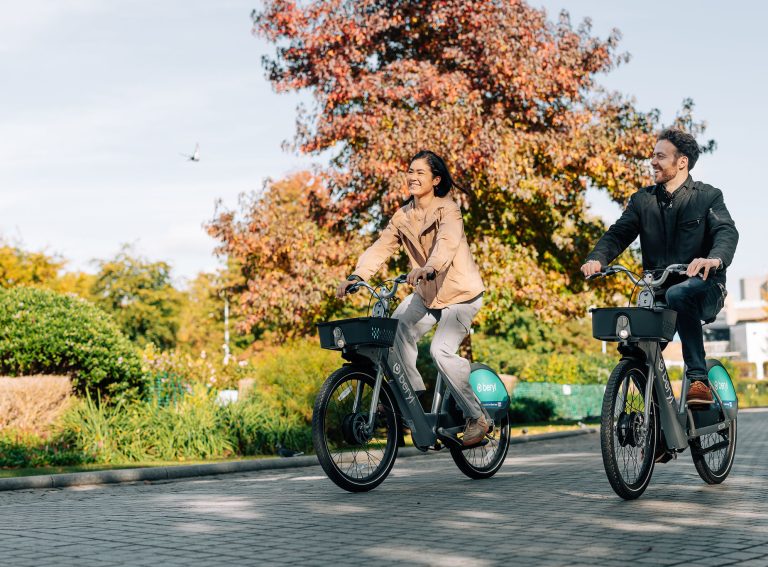Author: Jayden Bryant, General Manager of Australia and New Zealand for Neuron Mobility
Since their arrival six years ago, e-scooters have grown to be increasingly popular in New Zealand, which is one of the most car-dependent nations in the world.
However, along with the undeniable rider enthusiasm and widespread adoption, e-scooters have also encountered their fair share of scepticism over the years.
A recently released report by Neuron Mobility, “Unlocking the Potential of E-Scooters in New Zealand: Supporting Prosperity and Accessibility,“ is the most extensive study of its kind on e-scooters in New Zealand. It describes how rental e-scooters are improving New Zealanders’ daily lives in a number of ways, including by offering a 24-hour mobility option, stimulating the country’s economy, supporting sustainability goals, and generally making New Zealand’s cities more livable.
NZ $13,500 for every Neuron e-scooter
The study reinforces that rental e-scooters make a significant financial contribution to the economy. Every Neuron e-scooter contributes NZ$13,500 per year to the local economy, promoting trade and boosting the coffers of small businesses. This highlights the importance of micromobility as a catalyst for development and prosperity. It is also clear how important e-scooters are to the nighttime economy and for moving shift workers from A to B when public transport may not be running.
Boosting accessibility
In addition, e-scooters have a significant role in the growth of a city’s accessibility and inclusivity. According to the study, 6% of all Neuron riders in New Zealand identified as being disabled or having a mobility impairment. The data showed that many claimed to rely on e-scooters far more than people without reduced mobility. This demonstrates how e-scooters are already a very accessible form of transportation.
55% commute to work
The research further highlights the growing trend of e-scooters being used as a primary mode of transportation in New Zealand. Actually, the daily commute accounted for 55% of all trips, which is higher than any of our other cities worldwide. The ongoing shift towards more environmentally friendly modes of transportation has seen 36% of all Neuron’s e-scooter trips replace a car journey. This has led to improved air quality and reduced congestion, and of course, it supports many councils’ efforts to meet their sustainability goals.
Strong public support for helmets
Fortunately, most people in New Zealand understand the value of rider and pedestrian safety when it comes to rental e-scooters. However, 38% of Kiwis we surveyed were unsure of the legal requirements for helmets while riding e-scooters. Helmets are “highly recommended,” but not mandatory in New Zealand. That said, the majority of people are aware that they are the most important piece of safety equipment for saving lives. Data from the study showed that 74% of New Zealanders supported their introduction as a measure to increase safety. The debate over whether or not helmets should be required continues, and while it rumbles on, we will keep providing them on all of our e-scooters.
3 key areas for further action
As we look to the future, there are several key areas where further action would help to maximise the benefits of e-scooters in our cities. First and foremost, there is a pressing need for greater clarity on safety, particularly helmet regulations. Although most people in New Zealand understand how important it is to wear helmets when riding e-scooters, there is still some misunderstanding about the laws governing them. E-scooter operators need to collaborate with the authorities, safety organisations, and advocacy groups to promote clear and consistent messaging that will help ensure that riders prioritise their safety at all times.
Additionally, there has to be a greater emphasis on promoting accessibility and diversity. Even though our study shows that the use of e-scooters among people with disabilities or mobility impairments is significant, more needs to be done to ensure that these groups also have access to micromobility. This might entail offering seated e-scooters and different types of devices to further appeal to those with reduced mobility.
It is vital to continue to carefully integrate e-scooters into cities’ current transport systems. Even if e-scooters are becoming more and more common as a means of moving around our cities, there is still room for improvement. This might involve more cycle lanes allowing access to e-scooters, dedicated on-street parking bays, geofenced parking stations, and a greater integration with other public transportation options.
E-scooters without a doubt, are a force for good in New Zealand. But in order to fully realise their potential, all parties involved – rental operators, local governments, and the community at large – must work together. We can use e-scooters to build a more prosperous, inclusive, and sustainable future for all New Zealanders by putting safety first, encouraging accessibility, and embracing sustainable transportation options.











